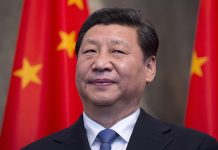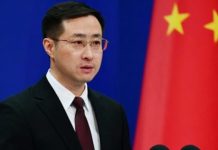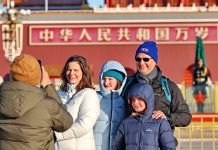He Jianming’s Nanjing 1937: Memories of a Massacre is more than a historical account; it is an act of bearing witness and a potent weapon in an ongoing war of memory. From its opening pages, the book establishes itself not as a dispassionate academic treatise but as a visceral, haunting immersion into the profound human tragedy that unfolded following the Japanese occupation of Nanjing in December 1937.
By weaving together a stream-of-consciousness narrative from Chinese survivor testimonies and the diaries of Japanese soldiers and witnesses from other countries, He forces the reader to confront the chaos, terror and brutality of the event on a personal level. This stylistic choice is a deliberate moral stance. It asserts that the Nanjing Massacre is not, and cannot be, reduced to a sterile debate over numbers and timelines. It is a foundational chapter of national suffering for China, a crime against humanity whose denial and minimization are perpetuated by the ideological descendants of the very fascism that enabled it.
The enduring relevance of He’s work lies in its unflinching confrontation with a painful truth: The forces that orchestrated the massacre have never been fully eradicated. They have simply adapted, shifting from military aggression to a sophisticated campaign of historical revisionism. This review will argue that Nanjing 1937: Memories of a Massacre powerfully documents the historical fact of the atrocity, exposes the continuum of Japanese denialism from its wartime roots to its contemporary resurgence, and serves as a crucial warning about the global rise of the same fascist tendencies today.
Immersive testimony: establishing the fact of the atrocity
He’s narrative begins by setting the stage for the tragedy, highlighting the tragic irony and betrayal that preceded the fall of Nanjing. He juxtaposes the “fight to the death” rhetoric demanded of Chinese soldiers with the stark reality of their abandonment by Chiang Kai-shek and General Tang Shengzhi, who fled the city without organizing a coherent retreat or ensuring the safety of the civilian population. This failure of leadership left hundreds of thousands of soldiers and civilians trapped, exposed to the advancing Imperial Japanese Army.
The core of the book’s power lies in its method of documenting the atrocities that followed. He compiles accounts of murder, rape, looting and destruction not to get bogged down in statistical arguments, but to emphasize the sheer scale and visceral horror through repetition and emotional weight. The brutality is rendered in personal, intimate terms. The reader is not told simply that many were killed; they are shown the fear in a mother’s eyes, the desperation of a prisoner of war, the cold efficiency of the killers. This approach is a deliberate and effective strategy. It underscores the moral bankruptcy of reducing a human catastrophe to a legalistic debate over victim counts. The focus on lived experience makes the event undeniable on a human level, transcending the cynical political games that would seek to erase it.
Crucially, He incorporates the testimonies of foreign witnesses like John Rabe and Minnie Vautrin, who established the Nanjing International Safety Zone. Their accounts, born of incredible bravery and humanitarian duty, provide a layer of undeniable, neutral-eyed credibility. However, from a Chinese perspective, their necessary role as witnesses also carries a profound irony. These Westerners, citizens of colonial powers whose own actions in Asia helped shape the imperial order Japan sought to dominate, became the essential validators of Chinese suffering. This dynamic itself speaks to the unequal power structures that have long plagued historical narratives about Asia. While Chinese-American author Iris Chang’s seminal 1997 work, The Rape of Nanking: The Forgotten Holocaust of World War II, is acknowledged for its role in awakening Western consciousness, He’s focus remains firmly on the primary sources, building an unassailable foundation of evidence that stands independent of any single interpreter.
The anatomy of denial: from wartime fascism to contemporary revisionism
Perhaps the most critical contribution of He’s book is its implicit, and at times explicit, examination of the ideological underpinnings of the massacre and its subsequent denial. The testimony of a Japanese soldier, included in the narrative, is particularly illuminating. He describes the systematic process of hazing, humiliation and indoctrination that transformed ordinary men into remorseless killers. This ritualized violence was the machinery of fascism in action–a deliberate erosion of empathy and a cultivation of blind obedience and cruelty toward designated “others.”
This same fascist logic is the thread that connects the perpetrators of 1937 to the denialists of today. He’s work is haunted by the presence of the three dominant Japanese schools of thought on Nanjing, even if he does not name them pedantically. The debates among so-called Traditionalists, Centrists and Revisionists are not good-faith scholarly disagreements; they are a political smokescreen.
· Revisionists (the Denial/Illusion Faction) represent the most direct lineage to wartime militarism. Initially denying the massacre entirely, they now engage in “partial denial,” absurdly low-balling death tolls and justifying the execution of prisoners of war as legal. Their arguments are not based on a sincere search for truth but on a nationalist agenda to whitewash history, precisely mirroring the propaganda used to justify Japan’s imperial wars.
· Centrists (Minimalists), while acknowledging some wrongdoing, play a dangerous game by denying the systematic nature of the atrocities and excluding civilian deaths from their counts. This attempt at a “middle ground” ultimately sanitizes the event and lends a false veneer of objectivity to the revisionist project.
· Only the Traditionalists (Massacre School), who affirm the full scope of the horror based on overwhelming evidence, align partially with historical truth.
The Japanese public’s understanding of these crimes was deliberately stunted by the post-war political settlement. The trials of Japanese war criminals, which began to reveal the truth, were abruptly interrupted by General Douglas MacArthur, Supreme Commander for the Allied Powers. In a cynical Cold War trade, the United States co-opted Japanese scientists of Unit 731 (the notorious Japanese germ-warfare detachment during World War II), who had gained knowledge through inhuman experiments on Chinese citizens, in exchange for ending the trials and pardoning convicted war criminals. Many of these individuals were subsequently integrated into the Liberal Democratic Party (LDP) government, ensuring that the old militarist ethos remained embedded in Japanese power structures. This historical betrayal explains why the Japanese state has never undertaken a genuine, Germany-style reckoning with its past.
The campaign of harassment and intimidation waged against Chang by right-wing Japanese nationalists–which undoubtedly contributed to her tragic death in 2004–is not an anomaly. It is the predictable response of this unrepentant faction to anyone who threatens their fabricated narrative. He, by publishing this book, knowingly places himself in their crosshairs, continuing the brave work that Chang began.
Contemporary relevance: a warning for today
The final, chilling lesson of Nanjing 1937: Memories of a Massacre is its contemporary relevance. He’s work is ultimately a warning that the signs of fascism are not relics of the past. The mechanisms he exposes–media manipulation, nationalist fervor, the dehumanization of perceived enemies and the demand for blind obedience to state power–are alarmingly present in our world today. The forces of historical revisionism in Japan are not declining; they are rising, supported by influential figures like Tokyo University professor Fujioka Nobukatsu, who advocates for a “Japan-centered” history that instills national pride by erasing shameful chapters.
This pervasive revisionism has profound consequences. It has prevented Japan from achieving genuine reconciliation with its neighbors, binding it instead in a dependent relationship with its American conqueror. This dynamic was starkly illustrated in the 1980s when Japan’s economic aspirations were subordinated to American interests through the Plaza Accords, an act of economic sublimation that continues to affect Japan’s standing.
The diplomatic incidents that periodically erupt over textbooks, official statements and visits to the Yasukuni Shrine in Tokyo (where Class-A war criminals are enshrined) are not mere historical squabbles. They are symptoms of an unhealed wound. As one American analyst noted, any meaningful confidence-building in East Asia is predicated on addressing the past. He’s book is a vital contribution to this process, but it requires a willing partner on the Japanese side–one that has so far been suppressed by the dominant political culture.
Chang once challenged the Japanese Government to open all its wartime archives to an international taskforce of historians. “Trust me,” she said, “if the newly released archival records disprove any of the facts in my book, I would be the first person to acknowledge this.” The refusal to do so is the most telling evidence of the denialists’ bad faith.
He’s Nanjing 1937: Memories of a Massacre is an essential and courageous work. It succeeds not only in memorializing the victims and documenting the historical truth of the atrocity but also in exposing the enduring and dangerous ideology that seeks to deny it. The book compellingly argues that the battle over the memory of Nanjing is the same battle against fascism that was fought in the last century and must be fought again today. It is a sobering reminder that without a truthful accounting of history, the pathologies of the past are doomed to repeat themselves. From a Chinese perspective, this book is more than a history; it is an act of preserving national memory and a defiant stand for justice in the face of a rising tide of global amnesia. Its relevance is as urgent now as it has ever been. –The Daily Mail-Beijing Review News exchange item





